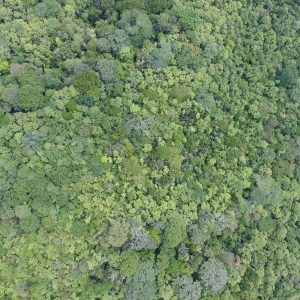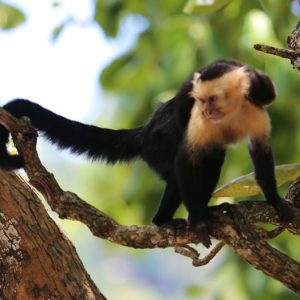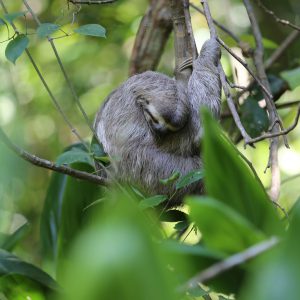 Aerial view of the Firestone Center for Restoration Ecology. Photo by Andrew Marx and Ahmed Alzahrani
Aerial view of the Firestone Center for Restoration Ecology. Photo by Andrew Marx and Ahmed Alzahrani
Claremont, Calif. (July 17, 2017)—Pitzer College’s Firestone Center for Restoration Ecology in southwestern Costa Rica is now part of the United Nations Educational, Scientific and Cultural Organization’s newly designated Savegre Biosphere Reserve. The Savegre Biosphere Reserve is one of 23 sites UNESCO designated in June as biosphere reserves, which are defined as learning places for sustainable development that aim to “reconcile biodiversity conservation and the sustainable use of natural resources,” according to UNESCO’s website.
 The Savegre Biosphere Reserve, which encompasses 733,227 acres, is brimming with biodiversity. It hosts 20 percent of Costa Rica’s flora, 54 percent of the country’s mammals and 59 percent of the nation’s birds, according to UNESCO. The reserve stretches south along the coast from the famed Manuel Antonio National Park to Firestone’s 815-acre neighbor and frequent research collaborator Hacienda Barú National Wildlife Refuge. Its boundaries then climb east up the Savegre River basin, where the Firestone Center is nestled about two miles from the town of Dominical, Costa Rica.
The Savegre Biosphere Reserve, which encompasses 733,227 acres, is brimming with biodiversity. It hosts 20 percent of Costa Rica’s flora, 54 percent of the country’s mammals and 59 percent of the nation’s birds, according to UNESCO. The reserve stretches south along the coast from the famed Manuel Antonio National Park to Firestone’s 815-acre neighbor and frequent research collaborator Hacienda Barú National Wildlife Refuge. Its boundaries then climb east up the Savegre River basin, where the Firestone Center is nestled about two miles from the town of Dominical, Costa Rica.
Pitzer’s Firestone Center has helped foster and protect this area’s abundant biodiversity. The center is located on a 150-acre swath of land that was blanketed by coastal rainforest before cattle ranchers cleared it in the ’50s and ’60s. Philanthropist Diane Firestone acquired the land in the ’90s and soon initiated reforestation projects. In 2005, she donated the property to Pitzer, which established the Firestone Center as a tropical ecological field station and the academic base for the College’s semester-long study abroad program.

Since the opening of the Firestone Center, Pitzer students, faculty and staff have helped restore the property’s natural habitat by planting native vegetation and battling invasive species to let a rapidly growing tropical forest heal itself. A recent research project using aerial drones to measure rates of reforestation showed nearly total regrowth on the property, where flora and fauna now flourish. Toucans, two- and three-toed sloths and three species of monkeys cavort in the canopy; wild cats like ocelots, jaguarundi and pumas can occasionally be spied in the thick undergrowth; two species of endangered poison-dart frogs lunch on leaf-cutter ants on the banks of streams that crisscross the property.
UNESCO refers to biosphere reserves as “science for sustainability support sites—special places for testing interdisciplinary approaches to understanding and managing changes and interactions between social and ecological systems, including conflict prevention and management of biodiversity.” The Firestone Center was designated part of the Savegre Biosphere Reserve during the International Coordinating Council of the Man and the Biosphere (MAB) Programme meeting in Paris in mid-June. New biosphere reserves are identified every year by the MAB Council, which is composed of representatives of 34 elected UNESCO members. There are 669 biosphere reserves in 120 countries, according to UNESCO. The Savegre Biosphere Reserve, including Pitzer’s Firestone Center for Restoration Ecology, joins three other reserves in Costa Rica.